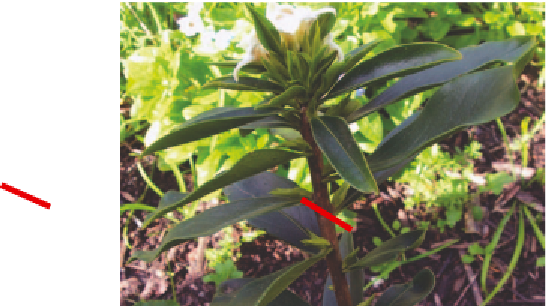Agriculture Reference
In-Depth Information
(a)
Figure 4.9
For shrubs that produce new vegetative
growth almost as soon as the flower has opened, be
brave and cut to behind the flower. If you don't, your
shrub will be straggly mess.
(b)
symmetry of the shrub is maintained, but
leave the rest alone unless you want to
sacrifice the autumn display.
Any rejuvenating pruning should be done
after or during the fruiting display
(see Figure 4.10).
Again, this is a good opportunity to cut the
fruits for display indoors. The same principle
Figure 4.8
This viburnum flowers on buds arising from
last year's growth. It is easy to see by noting the colour of
last year's growth (dark) and the present spring growth
(bright green) that has produced the flowers. Cut back
after flowering to behind the flowers. On weaker shoots
that you want to encourage, cut back to the lowest flower
and deadhead (a). If you wish to restrain growth cut to
behind the flowers (b).
Shrubs with flowers followed by decorative
fruit/berries
Shrubs grown for their flowers and decorative
fruits require different treatment from the
above. Fruit follow flowers, so if the flowers
are removed there will be no fruit display.
Any rampant vegetative growth put on in
spring can be shortened back so that the
Figure 4.10
Prune berry plants during or after the fruiting
display.






